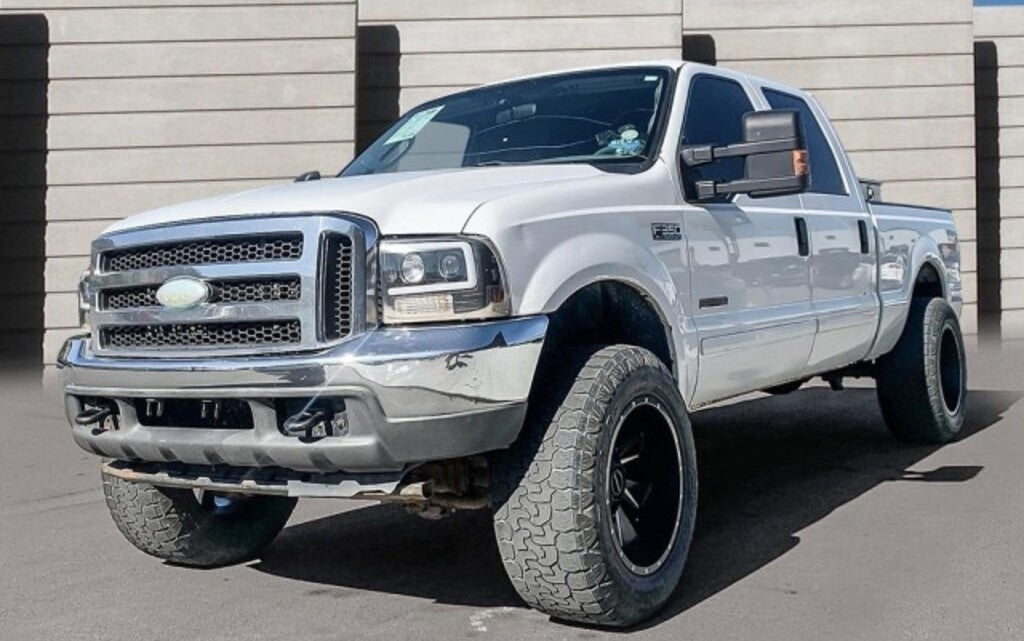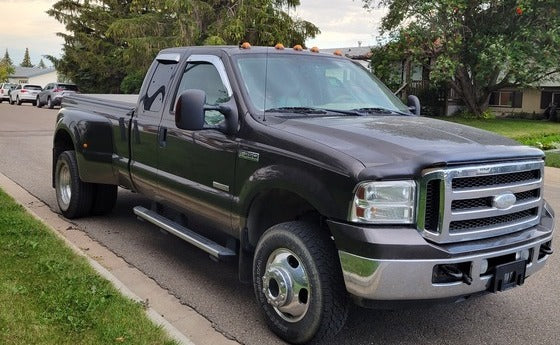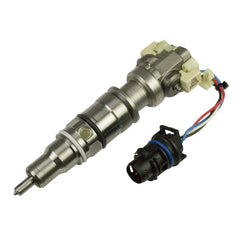START TYPING TO SEE PRODUCTS YOU ARE LOOKING FOR.
0
Your shopping cart is empty.

Common Issues With the 6.0L Power Stroke
How Do You Bulletproof a 6.0 Diesel?
Do a quick Google search for the 6.0L Power Stroke from ‘03 to ‘07 and many of the results that you receive will be focused on common problems, the biggest problems, and how to deal with those problems, which might give the impression that it is an engine not worth your time and effort. Despite this, the 6.0L has many fans who support it with almost religious zeal.
So, what is the story with the 6.0L Power Stroke? Is it a bad engine that should be avoided, or is it one that simply needs to receive a few fixes?

The 6.0L Power Stroke came into being in response to the stricter NOx emissions standards that were being put into place for diesels. It was realized that the only way to meet these requirements was to release a new engine platform.
Unfortunately, with Ford pushing to get this engine out quickly, there were certain issues that arose. The first engines experienced glitches with the injection system due to problems in the software. This resulted in complications with emergency vehicles using the new 6.0 and lawsuits were filed against Ford.
The 6.0L Power Stroke made use of several pieces of new emissions control equipment and a new variable geometry turbo. This helped to boost the power up to 325 hp and 570 pound-feet of torque. Certain parts were prone to failure, however, including the oil cooler, EGR cooler, and high-pressure oil pump, among others. There was a resultant perception of the engine as being unreliable, which impacted its reputation. Ford ultimately abandoned it in 2007.

The 6.0L was a more compact engine than the 7.3L, with both the oil cooler and high-pressure oil pump integrated into the block. The gear train for the crankshaft, camshaft, and high-pressure oil pump were moved to the back of the engine. It featured an exhaust gas recirculation (EGR) system, along with four-valve cylinder heads, a quick-spooling variable geometry turbocharger, and a fuel injection system with hydraulically actuated electronically controlled unit injectors (HEUI).
While the 6.0L had some serious issues, towing was not one of them. The towing capacity varied by model, year, cab size, and box length, but ranged from a conventional 12,500 pounds to 19,200 pounds.
Despite the various issues experienced by the 6.0L, enthusiasts have been able to push it to remarkable heights, with guides available online detailing how to add an additional 300 hp, and when you see Diesel Power Challenge competitor Jesse Warren push his 6.0L up to 1,758 hp and 2,532 pound-feet of torque, you know that the engine is a viable platform to work with.

As much as the 7.3L Power Stroke is known for durability, the 6.0L seems known for various problems. Some of the common issues included:
Factory exhaust manifolds are prone to cracking and warping often breaking studs and resulting exhaust leaks. Upgrading your exhaust manifolds and up-pipes will lead to increased reliability and performance.
This is the most commonly reported problem with the 6.0L. The purpose of the oil cooler is to lower the engine oil temperature, but it could become clogged or restricted with few warning signs. Silicone sand left behind from manufacturing could cause buildup and restrictions in the coolant system. The oil temperature, if too high, could cause gaskets and O-rings to fail. Checking for these issues should be a standard part of all routine maintenance.
These issues seem to be more common in the 2003 model year. This clean emissions component is intended to cool exhaust gas which is recirculated back into intake manifolds. However, soot buildup left the EGR coolers and EGR valves prone to failure. Sometimes this resulted in cracks, leading to coolant entering the engine. If this is severe it could cause hydro-lock and result in major damage to the engine.
The 6.0L Power Stroke fuel injection system uses split shot electronic unit injectors which deliver fuel to the cylinders. Unfortunately, the injectors do not operate well with poor fuel and oil quality. Dirty oil, low fuel pressure, electrical issues, and mechanical failures can all cause the fuel injectors to fail.
The Fuel Injection Control Module (FICM), which calculates the start of injection and injector duration and is responsible for precise injection can suffer slow deterioration, due to low battery voltage. In fact, it may go unnoticed long enough that by the time you are aware of an issue, it’s often too late.
Operating with very high pressure, the fuel injection systems may experience internal engine leaks as the O-rings deteriorate. When the engine is hot, this may result in hard starts, no starts, or loss of power.
A variable geometry turbocharger was designed to reduce turbo lag and create a better throttle response. Carbon or rust may build up in the vanes causing them to stick, leading to an over-boost or no-boost condition.
There are 4 torque-to-yield (TTY) cylinder head bolts per cylinder, each with precise clamping force, but certain circumstances can cause the bolts to stretch and lose that clamping force. These bolts are a significant problem that could lead to a blown head gasket.

Bulletproofing is a term coined by diehard 6.0L fans. When you bulletproof your diesel, it means that you have addressed at least four of the main problems associated with the Power Stroke. It will help to eliminate issues with these components and make your vehicle more reliable. This can be done by replacing and upgrading these parts. While this may seem to be solely about adding horsepower, it also means toughening your vehicle to survive this boost in power.
Almost any component on the 6.0L Power Stroke can be pointed to as exhibiting poor engineering, as evidenced by premature failures and other issues. Fortunately, top-quality parts exist that can replace faulty components, making your 6.0L much more dependable. Some of the parts to check include:
Several options exist to replace your turbocharger, such as the Screamer Performance GT37 Turbo. This direct drop-in turbo provides increased airflow and reduced backpressure.
See all the '03-'07 6.0L Power Stroke Turbo Chargers
Improve your performance with new fuel injectors. Each injector is flow tested and are capable of delivering a greater volume of fuel, satisfying all your fuel demands.

See BD Diesel's '03-'07 6.0L Power Stroke Fuel Systems
FICM
With the FICM being a crucial part of your vehicle’s performance, you can’t afford to wait until it fails to replace it. A new FICM can put your mind at ease while also providing better throttle response and an increase in horsepower. Pre-programmed and ready to install, you won’t have to worry about your existing part wearing down. Also available with a higher voltage option.
Using head studs will provide torque loading that is much more consistent and accurate. The top of the stud features finer threads, allowing for more precise torque readings, and providing greater accuracy.
The 6.0L Power Stroke may have its flaws, but with the right replacement parts, you can bulletproof your engine, increasing its lifespan and making it much more dependable. For more information on upgrading your engine, or the parts available, contact us today and we’ll be happy to answer all your questions.
See all the BD Diesel Ford 2003-2007 6.0L Power Stroke aftermarket and replacement products.
 2007 Ford F-350 King Ranch Crew Cab 4WD
2007 Ford F-350 King Ranch Crew Cab 4WD
| Engine: | 6.0L Powerstroke |
| Engine Design: | Turbocharged V-8 Diesel |
| Years Produced | 2003 to 2007 model years for Ford Super Duty and 2003 to 2009 for select commerical vehicle platforms |
| Transmissions: | 5-Speed 5R110W Torqshift Automatic ZF6 6-Speed Manual |
| Displacement: | 6.0 Liters (365 Cubic Inches) |
| Bore: | 3.74 inches (95 mm) |
| Stroke: | 4.134 inches (105 mm) |
| Block Material: | Cast Iron Block |
| Cylinder Head Material: | Cast Iron Cylinder Heads 4 valves per cylinder head |
| Intake Manifold: | Aluminum |
| Compression Ratio: | 18.0:1 |
| Firing Order: | 1-2-7-3-4-5-6-8 |
| Turbocharger/Air: | Garrett VGT GT3782 TurboCharger |
| Fuel Injection: | HEUI, Hydraulic Actuated electronic unit injectors |
| Valvetrain: | Single Cam 32 Valve |
| Oil Capacity: | 15 Quarts with filter |
| Def Fluid Capacity: | 0 – DEF Not Used |
| Cooling System Capacity: | 27.5 Quarts or 8.75 Gallons. |
| Fuel: | Diesel |
| Fuel Tank Size: | 29 Gallon or 38 Gallon Options |
| Horsepower: | 325 horsepower @ 3,300 rpms |
| Torque: | 2003-2004: 560 lb/ft @ 2000 rpms 2005-2007: 570 lb/ft @ 2000 rpms |
| Engine Dimensions: | Length: 35" (approx) Width: 38-1/4" (approx) Height: 40-3/4" (approx) |
| Suspension Type | 4X2: Twin-I-Beam 4X4: solid Twin-Coil Monobeam axle |
| Axle (rating @ ground) | 4850 lbs. (4×2); 6000 lbs. (4×4) |
| Springs | Coil Springs |
| Shock absorbers | 1 3/8″ gas type |
| Stabilizer bar | Standard |
| Suspension Type | Sold Axle |
| Axle (rating @ ground) | F-250: 6200 lbs F-350 SRW: 7280 lbs F-350 DRW: 9000 lbs |
| Springs | Leaf Springs |
| Shock absorbers | 1 3/8″ Gas Type |
| Stabilizer bar | Standard on DRW, Optional on SRW |
| Style of Towing | Tow Rating |
| SRW Max Conventional Tow Capacity | 12,500 lbs |
| SRW Max 5th Wheel Tow Capacity | 15,800 lbs |
| Dually Max Conventional Tow Capacity | 15,000 lbs |
| Dually Max 5th Wheel Tow Capacity | 19,200 lbs |